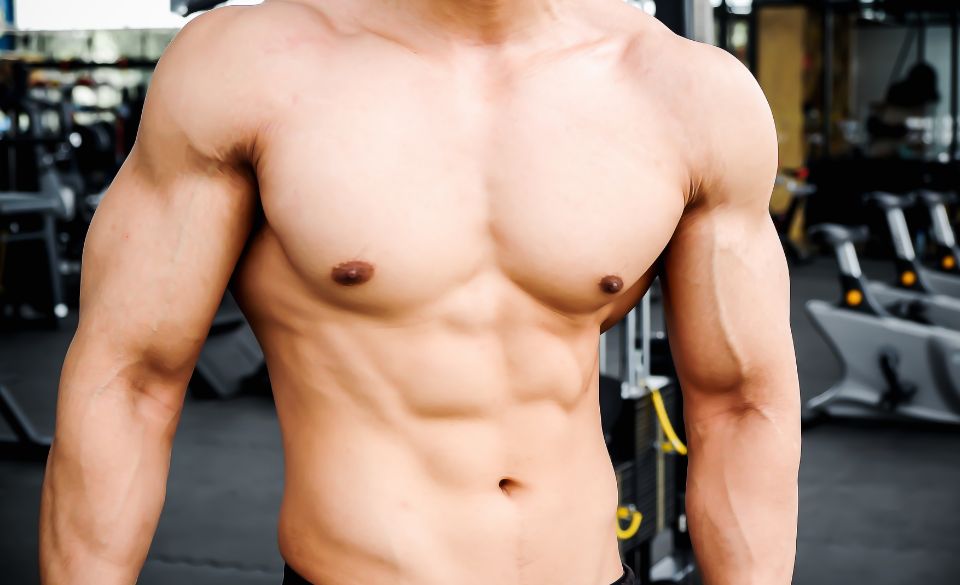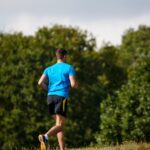
Unlocking the Mystery: How Long Does It Take to Get Abs?
Page Contents
Defined abs are a physical sign of strong and well-toned abdominal muscles. They are achieved through a combination of muscle development and low body fat percentage. Having visible abs is a common fitness goal for many people, as it signifies physical fitness and health.However, having defined abs is not just about aesthetics, but also indicates a strong core, which is essential for good posture, balance, and overall physical function. Strong abs can also improve athletic performance, reduce the risk of back pain, and enhance overall physical performance.
This article will answer the common fitness question: how long does it take to get abs? While the answer is not straightforward, we will explore the factors that influence how quickly one can achieve defined abs, including diet, exercise routine, genetics, and body fat percentage. Additionally, we will provide tips and strategies to help you achieve your fitness goals and get the abs you desire.
Understanding Abs
Abs, short for abdominal muscles, are the group of muscles that make up the front of your torso, running from your ribs down to your pelvis. They are made up of several muscles, including the rectus abdominis, external obliques, internal obliques, and transverse abdominis.
The rectus abdominis is the muscle that runs down the center of the abdomen and is commonly referred to as the “six-pack” muscle. The external and internal obliques are located on the sides of the rectus abdominis and help to rotate the trunk and bend the torso sideways. The transverse abdominis is the deepest abdominal muscle and helps to stabilize the trunk.
Having defined abs is a common fitness goal for many people. However, achieving visible abs requires a combination of strength training and a healthy diet. Strength training exercises that target the abs include exercises such as crunches, sit-ups, planks, and Russian twists.
It’s important to note that while having visible abs may be aesthetically pleasing, having strong abdominal muscles is also important for overall health and fitness. Strong abs help to support good posture, improve balance and stability, and can help to reduce the risk of injury during physical activity.
Factors that Contribute to the Appearance of Abs
The appearance of abs is determined by several factors, including genetics, body fat percentage, and muscle development.
Genetics play a significant role in determining the shape and size of your abs. Some people may have a naturally defined six-pack while others may have a less defined midsection, despite having a low body fat percentage and strong abdominal muscles.
Body fat percentage is another crucial factor that affects the appearance of abs. Even if you have strong abdominal muscles, they may not be visible if they are covered by a layer of fat. In general, men need to have a body fat percentage of around 10% or lower, while women need to have a body fat percentage of around 18% or lower, to have visible abs.
Muscle development is also important for the appearance of abs. Building strong abdominal muscles through exercises such as crunches, sit-ups, and planks can help to improve the appearance of your abs. Additionally, incorporating compound exercises such as squats and deadlifts into your workout routine can help to build overall muscle mass, which can also contribute to the appearance of abs.
Lastly, hydration and posture can also affect the appearance of abs. Dehydration can cause bloating, which can make your midsection appear less defined. Good posture helps to elongate the torso, making the abs appear more prominent.
The Role of Diet in Getting Abs
When it comes to achieving visible abs, diet plays a critical role. While exercise is important for building and toning the abdominal muscles, a diet that is high in processed foods and sugar can make it difficult to shed the layer of body fat covering the abs.
To get visible abs, it is important to maintain a caloric deficit. This means that an individual should consume fewer calories than they burn in a day, creating a calorie deficit that will lead to weight loss. However, it is important to create a moderate caloric deficit to avoid losing muscle mass, which is essential for achieving defined abs.
In addition to maintaining a caloric deficit, individuals should focus on consuming a diet that is high in protein, as this macronutrient is essential for building and repairing muscle tissue. Foods such as chicken, turkey, fish, eggs, and beans are excellent sources of protein.
Another important factor to consider is reducing the intake of processed foods and sugar. These types of foods can contribute to an increase in body fat, making it difficult to achieve visible abs. Instead, focus on consuming whole foods such as fruits, vegetables, and whole grains.
Finally, it is important to stay hydrated. Drinking plenty of water can help flush out toxins, aid in digestion, and keep the body functioning properly.
In summary, while exercise is important for achieving defined abs, diet plays a critical role. To get visible abs, individuals should focus on maintaining a moderate caloric deficit, consuming a diet that is high in protein, reducing the intake of processed foods and sugar, and staying hydrated. By making these changes to their diet, individuals can improve their chances of achieving their fitness goals and getting the defined abs they desire.
The Role of Exercise in Getting Abs
Getting defined abs is a common fitness goal for many people, and exercise plays a critical role in achieving this goal. Abs are muscles, specifically the rectus abdominis, which are located in the front of the abdomen. To make these muscles visible, they need to be developed and defined through targeted exercise.
Exercise helps to build muscle mass and reduce body fat, both of which are essential for developing visible abs. Resistance training, such as weightlifting or bodyweight exercises, is particularly effective in building muscle mass in the abs. These exercises stimulate the muscles to grow and become more defined, leading to a more chiseled appearance.
In addition to resistance training, cardiovascular exercise is also important for getting abs. This type of exercise burns calories and reduces body fat, which is essential for making the abs visible. Cardiovascular exercise can include activities such as running, cycling, or swimming, and should be performed regularly to see results.
However, it’s important to note that exercise alone may not be enough to achieve visible abs. Diet also plays a significant role in reducing body fat and revealing the abs. A diet that is high in protein and low in processed carbohydrates and sugars can help to promote fat loss while preserving muscle mass.
How Long Does It Take to Get Abs?
There are several factors that determine how long it takes to get abs. Firstly, genetics plays a role in determining the shape and size of your abs. Some people may naturally have more defined abs than others. Secondly, the amount of body fat you carry will impact the visibility of your abs. If you have a higher body fat percentage, it may take longer to see visible abs. Thirdly, the type and intensity of exercise you do will impact how quickly you develop visible abs. Regular strength training and cardiovascular exercise will help to build muscle and reduce body fat, respectively. Lastly, your diet will play a critical role in how quickly you develop visible abs. A diet that is high in protein and low in processed carbohydrates and sugars will help to promote fat loss while preserving muscle mass.
There are several common misconceptions about getting abs. One of the most prevalent is that doing endless amounts of ab exercises will result in visible abs. However, while ab exercises are important for developing the rectus abdominis muscle, they alone will not result in visible abs. Another misconception is that spot reduction is possible. Spot reduction refers to the idea that you can target fat loss in a specific area of the body. However, this is not possible as the body loses fat from all over, not just one specific area.
The timeline for getting visible abs varies from person to person and depends on several factors. Generally, it can take anywhere from 4-12 weeks of consistent exercise and a healthy diet to see some visible definition in the abs. However, to achieve fully defined and chiseled abs, it may take longer. It’s important to remember that the timeline for getting abs is not set in stone and will depend on several factors, including genetics, body fat percentage, exercise, and diet. Consistency and patience are key when working towards visible abs.
Tips for Getting Abs Faster
Achieving defined abs is a popular fitness goal for many people, but it requires commitment, patience, and hard work. However, there are a few tips backed by studies that may help you get abs faster.
Increase Protein Intake: Consuming adequate protein is crucial for building muscle mass, which is essential for visible abs. According to a study published in the Journal of the International Society of Sports Nutrition, consuming protein immediately after exercise can increase muscle protein synthesis, leading to faster muscle growth.
Add HIIT Training to Your Routine: High-Intensity Interval Training (HIIT) has been shown to be effective in reducing body fat, including abdominal fat. According to a study published in the Journal of Obesity, HIIT can help to reduce overall body fat percentage and abdominal fat in particular.
Incorporate Compound Exercises: Compound exercises, which involve multiple muscle groups, have been shown to be more effective in building muscle mass than isolation exercises. According to a study published in the Journal of Strength and Conditioning Research, compound exercises such as squats, deadlifts, and pull-ups can increase muscle mass in the abdominal muscles.
Reduce Stress: Chronic stress has been linked to increased levels of cortisol, a hormone that can lead to increased abdominal fat. According to a study published in the Journal of Behavioral Medicine, mindfulness-based stress reduction can help to reduce cortisol levels and lead to reduced abdominal fat.
Get Enough Sleep: Getting enough sleep is crucial for muscle recovery and growth, as well as overall health. According to a study published in the Journal of Clinical Sleep Medicine, sleep deprivation can lead to decreased muscle mass and increased body fat, including abdominal fat.
In conclusion, there are several tips backed by studies that may help you get abs faster. These include increasing protein intake, adding HIIT training to your routine, incorporating compound exercises, reducing stress, and getting enough sleep. However, it’s important to remember that achieving visible abs requires consistency, patience, and a healthy diet in addition to regular exercise.
Final Words – How Long Does It Take to Get Abs?
In conclusion, getting visible abs is a popular fitness goal that requires a combination of exercise and a healthy diet. While genetics plays a role in determining the shape and size of your abs, there are several tips backed by studies that can help you get abs faster. These include increasing protein intake, incorporating HIIT and compound exercises into your routine, reducing stress, and getting enough sleep. It’s important to remember that achieving visible abs takes time and effort, and there are no quick fixes or shortcuts. Consistency, patience, and a commitment to a healthy lifestyle are key in achieving the visible abs you desire.



